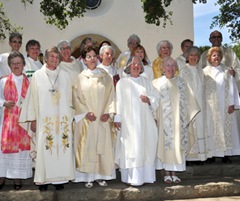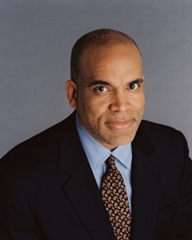It has become clear that congregations that depart the ELCA will not become part of a single, unified dissident body; instead two separate and distinct organizations will be vying for allegiance: the existing Lutheran Congregations in Mission for Christ (LCMC) and the yet to be formed North American Lutheran Church (NALC), spawned by Lutheran CORE. And then there is the third organization, the WordAlone Network that is caught between but with an apparent lean toward CORE (shared offices and staff, for instance).
Public pronouncements from the two organizations do not hint at any competition—“two rails of the same track” saith their spokesmen. Yet, there are subtle indicators of tension.
A disclaimer has suddenly appeared on the blog of the WordAlone Network:
This website is sponsored solely by the WordAlone Network and is not a publication of LCMC – Lutheran Congregations in Mission for Christ, nor does it necessarily represent all the organizations that are a part of Lutheran CORE.
Last week, I commented upon the schism amongst the schismatics by quoting at length from a post from the Google Group, “Friends of the LCMC” where the question was raised, “what, specifically, does the NALC offer that LCMC DOES not or CANNOT offer?”, and the post concluded that the “LCMC and NALC will be splitting a small pie”.
In response to my post, there was a “shhh” whispered on the LCMC friends group site.
we [must] watch what we say and how we appear to the inquiring public … But last fall, we had some harsh comments being made. I am just reminding everyone (myself included) that our tone matters because this is a publicly accessible forum.
More recently, a Friend of the LCMC created and posted a pdf document comparing the proposal for a new denomination from NALC with the existing LCMC. The creator commented about the comparison:
Suffice to say, the proposal may differ from the final product, but based on what I see, I am not impressed.
 Clearly, there are ecclesiological differences (in a nutshell, denominationalism vs congregationalism), but the point I want to make here is that there are elements within these organizations at pains to draw distinctions, thus evidencing the competition that exists and will exist as NALC nears formation. To carry their metaphor of a railroad track forward, are the tracks about to split?
Clearly, there are ecclesiological differences (in a nutshell, denominationalism vs congregationalism), but the point I want to make here is that there are elements within these organizations at pains to draw distinctions, thus evidencing the competition that exists and will exist as NALC nears formation. To carry their metaphor of a railroad track forward, are the tracks about to split?
For the sake of perspective, I again offer the reminder that the ELCA consists of over 10,000 congregations; to this point, less than 200 have passed a first vote to leave the ELCA. I think the LCMC critic of NALC is absolutely right—the two organizations will be splitting a small pie, and Lutherandom will see two more small, splinter organizations to take their place with the Lutheran Brethren (123 congregations) and Association of Free Lutheran Churches (AFLC) (270 congregations) while aspiring to the size of the Wisconsin Synod which claims around 1,300 congregations.
Reconfiguration of North American Lutheranism? Splitting a small pie or pie in the sky?





![bannerfans_5093988[1] Click here for more info](http://www.theliberalspirit.com/wp-content/uploads/2010/02/bannerfans_50939881.png)




